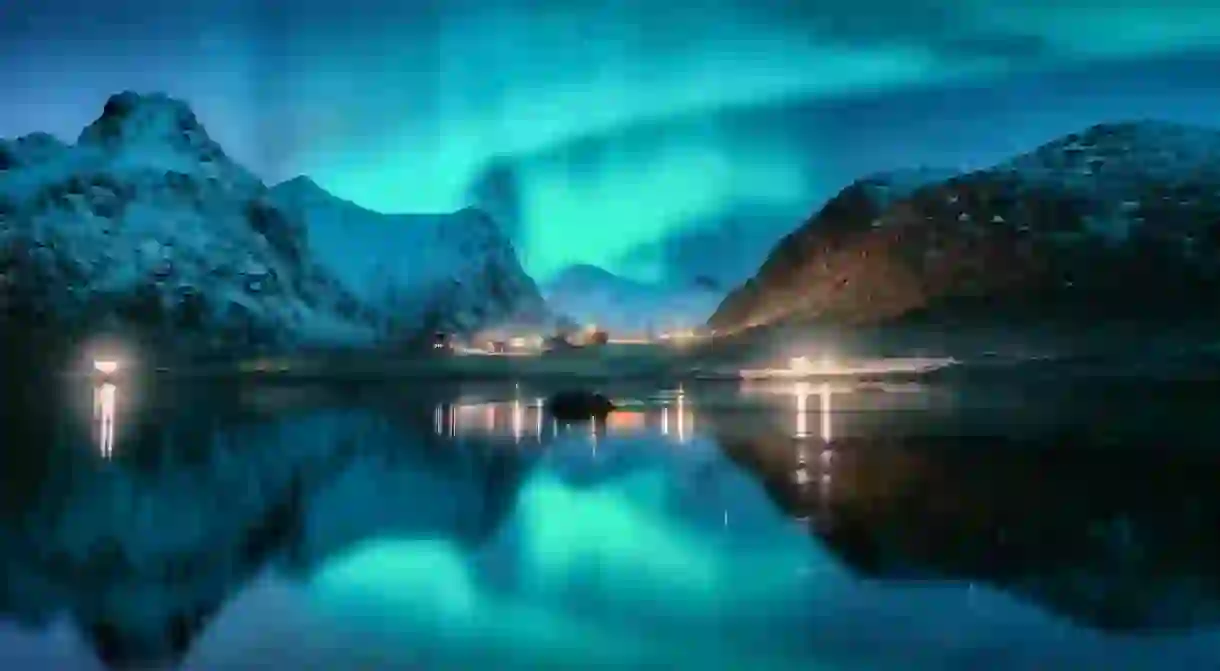The Best Places to See the Northern Lights across Iceland

In Iceland, the Aurora Borealis is up there with glaciers, ice caves and volcanoes as one of the main reasons for visiting – but you need to know where to go. Here’s where you stand the best chance of seeing nature at its most spectacular, and a few hints on how to see them too!
Best Trips and Tours in Iceland
Natural Feature

With its fascinating mix of amazing natural landscapes, wildlife encounters and, of course, the northern lights, Iceland is an amazing destination well worth exploring. It’s home to some of the most powerful waterfalls on Earth, enormous whales swim in its seas and volcanoes heat up the land, providing natural hot springs to relax in at the end of a long day of discovery. With these tours you can see just how unique and wonderful Iceland truly is.
How to See the Northern Lights in Iceland
Northern Lights Night Tour from Reykjavik
Tours

Although areas with less light pollution allow for better viewing conditions, even Reykjavík’s city lights cannot block out the Northern Lights completely. It is not uncommon to see them from areas located downtown. A great place to head is Reykjavík’s oldest swimming pool, the Art Deco style Sundhöllin, where the rooftop hot tub provides a great view.
Reykholt
Natural Feature

If sleeping out under the night sky in a see-through igloo sounds like your kind of thing, try booking a buubble. Located within the Golden Circle, close to Reykholt, these structures allow you to gaze at the Aurora… while lying in a cozy bed. Likewise, Ion Adventure Hotel in Selfoss offers a great outdoor geothermal hot pool, which boasts an incredible view of the surrounding lava fields and the night sky.
Mývatn Nature Baths
Natural Feature

Another great location, if you find yourself in the North of Iceland, is the Mývatn Nature Baths – which are a similar, albeit quieter version of the bustling Blue Lagoon. These relaxing baths, located close to Akureyri, are especially great at night when there is snow on the surrounding lava field and steam rising from the bath; the stars seem even brighter as you float in the buoyant water.
Where to See the Northern Lights in Iceland
Klambratún
Park
This large park, not far from the centre of Reykjavík, might not seem like the most obvious spot if you’re searching for the Northern Lights, but the rows of trees surrounding the perimeter do a pretty good job of blocking out light from the nearby apartment blocks. It’s so big that if you were to stand right in the middle, you’d be almost completely unaffected by light pollution, giving you a better chance of spotting the swirling colours marbling the sky. If you time it right, this is one of the best places to see the Northern Lights in Iceland.
Laugardalur
Park, Forest, Hiking Trail
Laugardalur is home to a network of outdoor-activity areas on the outskirts of Reykjavík; it’s where locals come to stretch their legs on the hiking trails, in the sports centres and, when winter descends, on the ice rink. It’s also where you’ll find two large outdoor thermal pools, which stay open until 10pm. That should give you plenty of time to strike lucky with the Northern Lights as you sprawl comfortably in the steamy water. The lack of light pollution is an advantage, too.
Akureyri
Natural Feature, Park

In the far north of Iceland, Akureyri is a port city with an attractive setting at the head of a huge fjord, picturesquely surrounded by snow-capped peaks. It’s small and remote enough to ensure light intrusion is minimal, even in its centre; therefore, on a clear night, if the heavens above are dancing with colourful streaks of light, you’re bound to find a front-row seat for the show. Being farther north and slightly closer to the Arctic Circle can also make a slight difference in how often the lights appear.
Grótta
Park, Natural Feature, Forest

Öskjuhlíð
Building

Vik
Natural Feature

You’ll need to drive about 187km (116mi) southeast of Reykjavík, along the main ring road, to reach the desolate little beachfront of Vík, the most southerly village in Iceland. It’s home to only about 300 residents, and the black-sand beach just next to the small fishing settlement is an excellent backdrop for those magical dancing illuminations – hence the regular arrivals of tourists from town. Just keep your eye on the waves, which are known to be strong and lunge.
Þingvellir National Park
Park, Natural Feature

þingvellir National Park might have been custom-designed as a backdrop for the Aurora Borealis. Comfortably removed from the urban buzz of Reykjavík, it’s a dramatic landscape of lava rock and moss, making a formidable accompaniment to the main event. You’re looking at a little less than an hour’s drive northeast of the capital, and if you’re coming here, you might as well stay here. Check out the availability at the 5 Million Star Hotel. Close to the tiny western village of Reykholt, it’s a set-up of translucent accommodations – as delicate and spherical as blown bubbles – in which to spend the night stargazing while cosily sheltered from the wind and other weather elements.
Ásbyrgi Canyon
Natural Feature

To find Ásbyrgi Canyon, which means Shelter of the Gods, head towards the northern town of Húsavik, on the shores of the mirror-still bay of Skjálfandi. The canyon is about 64km (40mi) beyond – an easy drive on the Diamond Circle road. Ásbyrgi is another beautiful, exceptional, far-flung location where you can lie back and admire the psychotropic antics of the Aurora Borealis far above. With cliffs rising 100m (328ft) high and a woodland forest of ash, birch and willow, this glacial canyon has an overall effect that is tinglingly good, cosmic and earthly.
Alex Allen contributed additional reporting to this article.













